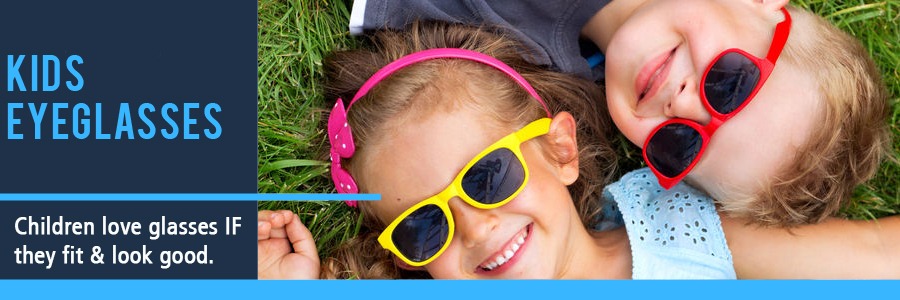
Personalized Eyewear Consultation by Appointment Only (215) 443-7706
- Home
- About
- Products
- Services
- Lens Lab
- Vision Care
- Newsletter
- Contact Us
Menu- Home
- About
- » Doug Wohl
- » Awards
- » Reviews
- Products
- » Bifocals
- » Computer Glasses
- » » Computer Vision Syndrome - Digital Eye Strain
- » Contact Lenses
- » » Are Contacts Right For You
- » » Guidelines for Contacts Wear and Care
- » » Instructions for Soft Contacts
- » Eyeglass Frames
- » » Frame Guide - Frame Shape and Face Shape
- » » Frame Materials
- » » Eyewear Maintenance
- » » Makeup Tips When Wearing Glasses
- » » Wiley X Eyewear Frames
- » Children Eyeglasses
- » » Eyewear for Babies and Young Children 0-5 Years Old
- » » Kids Corner
- » » 10 Tips for Buying Glasses for Children
- » Occupational Eyeglasses
- » Prescription Lenses
- » » Lens Coatings and Tints
- » » » Anti Reflective Coating
- » » Replacement Lens Options
- » Progressives
- » Readers
- » Safety Glasses
- » » Eye Injuries that Could be Prevented with Safety Glasses
- » » Prescription Safety Eye Glass Feature Guide
- » Single Vision Eyeglasses
- » Sports Eyewear
- » Sunglasses
- » » UV Eye Safety
- Services
- » Eye and Vision Exam
- » » Eye and Vision Problems
- » » Glaucoma Test
- » » Vision Refraction
- » Contact Lens Exam and Fitting
- » Eyeglass Repair
- Lens Lab
- Vision Care
- » Cornea
- » Detached Retina
- » Diabetic Retinopathy
- » Dry Eyes
- » Eye and Vision Conditions
- » Fun Eye Facts
- » Eye Function and Parts Explained
- » FAQ
- » Macular Degeneration
- » Makeup Causing Eye Damage
- » Medication Side Effects to Vision
- » Optic Nerve Damage
- » Optical Terms and Definitions
- » Red Eye
- » Retina Damage
- Newsletter
- » Blue Light Blocker Glasses
- » Buying Glasses Online
- » Covid-19 Safety Practices
- Contact Us
Ten Tips About Buying Eyeglasses for Children
Here are 10 items to consider to make your trip to the optical shop an enjoyable experience and to ensure that you get children's glasses that will last and they will enjoy wearing. If you're a parent in search of the right pair of eyeglasses for your children, you probably know that walking into an optical store can be confusing. You'll see plenty of children's eyeglass frames, but that's the problem!
As parents, we know if our kids are not happy about eyeglasses, they will get lost somehow, perhaps on purpose.
1. LENS THICKNESS - The eyeglass prescription is always the primary consideration in choosing glasses. Before you start looking for the frames, consult with Wohl's opticians about lens considerations.
If the prescription calls for strong lenses that are likely to be thick, it is important to keep the frames as small as possible to reduce the final lens thickness. Also, smaller lenses tend to have fewer higher-order aberrations near the edge of the lens than large lenses of the same material and prescription, so there is less risk of blurred or distorted peripheral vision.
2. FASHION STATEMENT - Whether they are full- or part-time eyeglass wearers, most kids get at least a little teasing about their specs, especially the first time they wear them. So it's very important that they avoid frames that make them look "uncool." You also should steer your child away from frames that clearly are objectionable, too expensive or inappropriate.
3. PLASTIC OR METAL FRAMES? - In the past, plastic frames were a better choice for children because they were considered more durable, less likely to be bent or broken, lighter in weight and less expensive.
But now manufacturers are making metal frames that incorporate these features as well. Metal composition varies, so ask Doug Wohl which one is best for your child, based on experience with different alloys. Talk with Doug Wohl about hypoallergenic materials if your child has shown sensitivity to certain substances. For example, some people are allergic to frame alloys that contain nickel.
4. BRIDGE FIT - Each frame must be evaluated individually to make sure it fits the bridge. If any gaps exist between the bridge of the frame and the bridge of the nose, the weight of the lenses will cause the glasses to slide, no matter how well the frame seems to fit before the lenses are made.
It is important that the glasses stay in place, because kids tend to look right over the tops of the lenses instead of pushing slipping glasses back up where they belong. Your optician usually is the best judge of whether a frame fits properly.
5. TEMPLES - Temples that wrap all the way around the back of the ear help keep glasses from sliding down or dropping off a child's face completely.
Wraparound temples, called "cable temples," generally are available on metal frames and are especially helpful to keep glasses in place on toddlers.
Another option is a strap that goes around the head.
For glasses that go on and off frequently, it is better to have regular, or "skull," temples that go straight back and then curve gently around the back of the ear.
6. SPRING HINGES - Kids are not always careful when they put on and take off glasses, and spring hinges can help prevent the need for frequent adjustments and costly repairs. They also come in handy if the child falls asleep with the glasses on or just has a rough day at play. Spring hinges are strongly recommended for toddlers, who sometimes get carried away playing with their new glasses.
7. LENS MATERIAL - Once you and your child agree on frames that you both like, the next consideration is the lenses.
Children's lenses should be made of poly-carbonate or a material called Trivex, because these lightweight materials are significantly more impact-resistant than other lens materials.
In addition to being the safest materials, they also are lighter in weight than regular plastic lenses, a nice advantage for strong prescriptions.
8. SPORTS EYE-WEAR - Poly-carbonate is such a safe lens material that you may be tempted to let your child play sports in his regular glasses.
Here's the drawback: Although poly-carbonate is the lens material used for sports eye-wear, regular eyeglass frames do not provide enough protection from large objects such as balls and flying elbows. So if your child is involved in sports, a proper sports goggle with poly-carbonate lenses will provide the best protection against eye injury.
9. BACKUP PAIR - Because children can be tough on their eye-wear, it's always a good idea to purchase a second, or backup, pair of eyeglasses for them. This especially is true if your child has a strong prescription and cannot function without his or her glasses.
10. PRESCRIPTION SUNGLASSES - Children need sunglasses just as much as adults. Children under age 10 are at a high risk for skin and eye damage from UV light. The skin on their eyelids and around their eyes is more delicate and vulnerable than adult skin. And until about age 10, the lens of a child's eye is clear, allowing greater solar penetration and thus greater UV-induced ocular changes.
UV exposure causes 90% of all skin cancers. Retina exposure to UV radiation is associated with cataracts and macular degeneration. UV damage builds over time, so the sooner you start protecting your child's eyes from the sun, the lower the risk of them ever developing future eye problems.
Fortunately, good sunglasses protect both the skin around the eye and the eye itself. While children under 6 months old should never be exposed to the sun, once they reach 6 months, they should ALWAYS wear sunglasses outside. If they require prescription glasses, they should also wear prescription sunglasses.
About Wohl Optics Vision Care
Proper eyewear prescription AND fit are vital for your best vision. Fit is something that you will never get right with an online optical business. Veteran owned and operated - best in Bucks County Optical eye care shop.
How could your vision be better? What situations do you feel give you trouble when wearing eyeglasses? That is why we are here.
Exclusive Discounts
Military, Veterans, First Responders, Police, Firefighters, Ambulance all receive exclusive discounts (not combined with insurance or other discounts).
We accept most major Vision Insurance Plans.
(215) 443-7706 Phone
(215) 443-8795 FaxWohl Optics
550 Street Rd.
Warminster, PA 18974Veteran Helping Veterans - Local Bucks County, PA Independent Optician

Copyright © 2016-2022
All Rights ReservedCredit Cards Accepted

Private Consultations for your Family: Flexible hours at your convenience by appointment ONLY
Wohl Optics Regular Schedule:
Monday 10:00AM - 5:00PM Tuesday 10:00AM - 4:00PM Wednesday 10:30AM - 6:00PM Thursday 10:30AM - 7:30PM Friday 10:00AM - 6:00PM Saturday 10:00AM - 1:00PM We are offering personal appointments to everyone for the selection of eyeglasses and eyeglass adjustments. We will make every effort to accommodate your schedule. Let us know if you would like to meet at Wohl Optics outside of the above regular scheduled hours.
Service Areas
Bucks County, PA; Montgomery County, PA; Chester County, PA; Philadelphia, PA; Warminster, PA; Ivyland, PA; Warrington, PA;Furlong, PA; Warrington, PA; New Hope, PA; Southampton, PA; Bensalem, PA; Northampton, PA; Hatboro, PA; Willow Grove, PA; Huntingdon Valley, PA; Horsham, PA; Lansdale, PA; Montgomeryville, PA; Newtown, PA; Langhorne, PA; Lahaska, PA; Buckingham, PA; Yardley, PA; Chalfont, PA; Richboro, PA; Doylestown, PA; Glenside, PA; Ambler, PA; Fort Washington, PA; Churchville, PA; Norristown, PA; Washington Crossing, PA; Philadelphia, PA.
Wohl Optics 550 Street Rd. Warminster, PA 18974 (215) 443-7706 Privacy Policy HIPAA Sitemap
